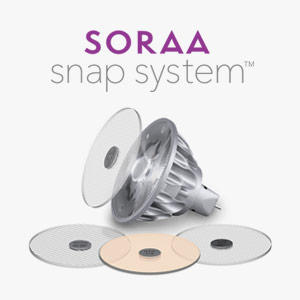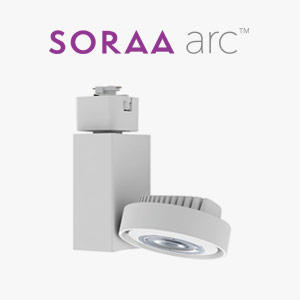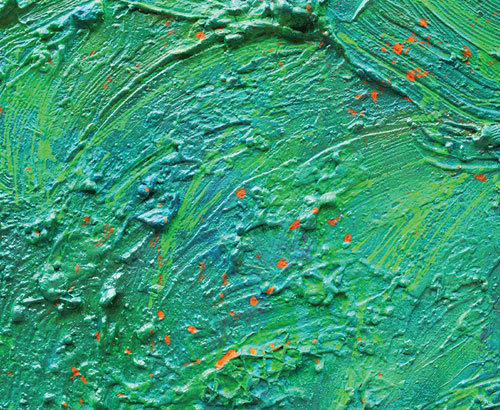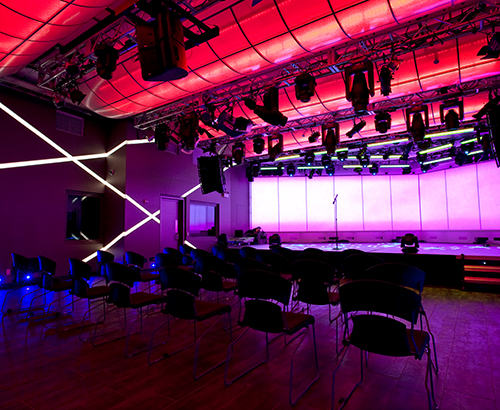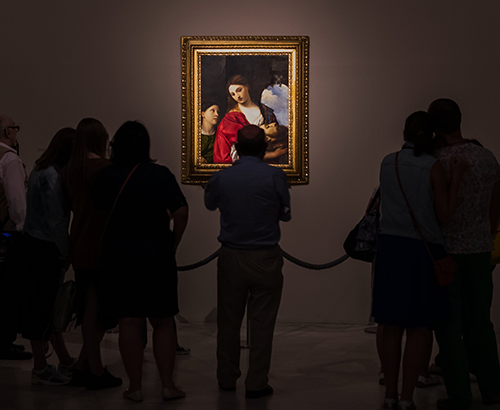I like this
Light should accentuate your most prized pieces of art, not damage them. Whether your art collection features paintings, sculptures, furniture, artifacts or fragile documents, applying proper fine art lighting techniques can lengthen the lifespan of your pieces, all while enhancing the viewing experience with optimal color rendering and optics.
SORAA Chief Scientist Aurelien David shared the fine art lighting techniques below to help bring your masterpieces to life. Apply these tips anywhere you display art and precious objects, including: museums, galleries, hotels,restaurants and home.
Fine Art Lighting Tip #1: Reduce the Amount of Light Emitted
It’s a simple fact: The more light a lamp emits, the more damage it causes to artwork. Choosing moderate-to-low light conditions is one of the most effective fine art lighting solutions. Reducing illuminance from 300 lux to 30 lux, for example, increases a fine art piece’s lifespan tenfold (in terms of light exposure).
You may find it tricky to maintain comfortable viewing conditions with too low an illuminance. Try different light contrasts to perfect your fine art lighting, such as adjusting room lighting. For example, a fine art piece illuminated with a moderate illuminance is more striking when placed in a dim or dark room, instead of a brightly-lit room.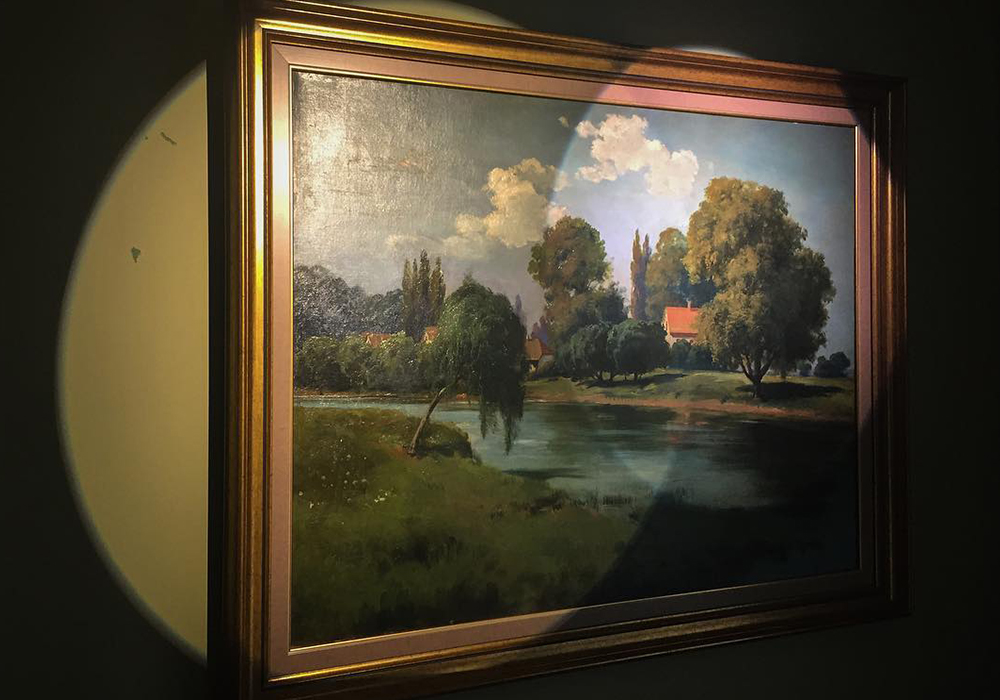 Light matters when accentuating colors within a work of art. Ali Berkman, founder and lighting designer of ON | OFF Lighting Design, illuminated this piece at the Arkas Art Gallery in Turkey with a conventional LED (left) and a SORAA LED (right) for demonstration purposes.
Light matters when accentuating colors within a work of art. Ali Berkman, founder and lighting designer of ON | OFF Lighting Design, illuminated this piece at the Arkas Art Gallery in Turkey with a conventional LED (left) and a SORAA LED (right) for demonstration purposes.
When using LEDs for fine art lighting, the need for low illuminance and strong light level control increases the necessity for excellent dimming capabilities. Stroboscopic flicker, which can become severe when dimming a lamp with a low-quality driver, for instance, can negatively impact the art viewing experience.
Fine Art Lighting Tip #2: Optimize Light Distribution
You want a light solution that distributes uniform beams to showcase your fine art pieces. Any light source’s distribution varies with angle. Typically, maximum illuminance is at the center of the spot. If the illuminance varies by 30% across the width of an art piece, the center of the piece is overexposed and suffers 30% more degradation. For this reason, the quality and uniformity of a beam is crucial.
Large-angle light can deliver lumens in unwanted directions. A directional optic directed towards one piece may emit a substantial amount of spill light toward another piece, increasing its illuminance. Mitigate this effect by examining a light source’s beam profile, since usual specifications, such as beam angle, do not provide insights on the actual beam shape.
Large-angle light can also disturb the art viewing experience with secondhand glare (for instance, reflecting light off of paintings). Many museums prevent direct glare by concealing line-of-sight to light sources. However, large-angle light can create secondhand glare that reduces visual acuity. People try to eliminate secondhand glare by increasing illuminance, which causes more damage to art.
Use directional luminaires with high-quality beam profiles, smooth distribution, no hot spots, proper beam angles and low spill and glare to mitigate these fine art lighting challenges. Using glare-reducing shades and louvers can help reduce light spill, but it’s important to note that they can also create too sharp of a cut-off in the beam profile and degrade the overall aesthetic.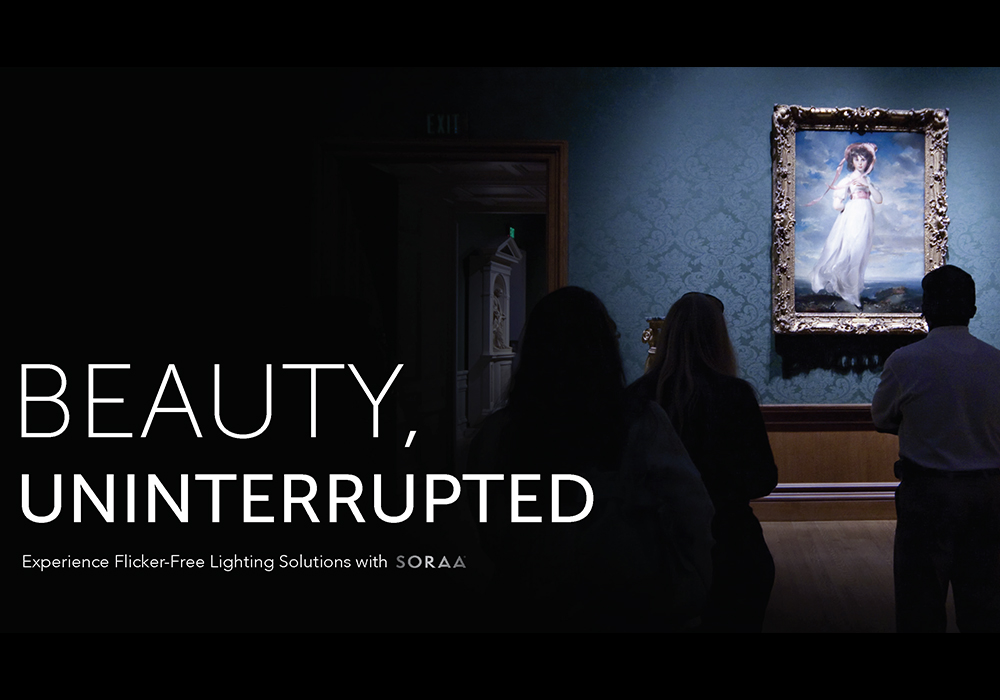
Fine Art Lighting Tip #3: Avoid Non-Visible Radiation
The light spectrum also plays a critical role in artwork damage. In general, short-wavelength photons cause higher damage to your most precious objects. Specific wavelength sensitivity depends on the pigments of each paint or material.
Non-visible radiation, especially ultraviolet radiation, should always be avoided because it damages artwork without enhancing it. Modern LEDs emit virtually no UV radiation and very little infrared, however, so they make for optimal fine art lighting solutions. SORAA LED lamps, for example, emit about 100 times less UV radiation than halogen lamps.
Similar to sunlight, a full-spectrum, high-CRI LED will accurately render colors (with much less damage-causing UV radiation, however). It’s important to note that for a given illuminance, the extra radiation from full-spectrum LEDs leads to a slightly higher amount of damage—typically 20-30% more damage when compared to a low-CRI LED. For this reason, you may have to choose what’s more important to you: accurate color rendering and more damage, or weaker color rendering and less damage. If you prefer stronger color rendition, you can try reducing illuminance by 20-30% to maintain the damage level.
Scientific studies on human perception have found that our vision system is very sensitive to color rendering changes but rather insensitive to light levels. This makes improved color at a lower illuminance a wise choice when evaluating fine art lighting strategies.
Learn More About Fine Art Lighting
When assessing fine art lighting solutions, remember to keep illuminance, beam quality and non-visible radiation in mind. SORAA LEDs and directional luminaires offer museums, galleries, hotels, restaurants and fine art collectors an extensive range of products to bring any masterpiece to life—including Stern Pissarro Gallery’s Impressionist pieces and the Detroit Institute of Arts’ exhibits.
SORAA VIVID™ lamps and SORAA ARC™ directional luminaires designed with SORAA VIVID Color™ technology, for instance, deliver industry-leading color rendering with CRI-95+ and R9-95. SORAA’s proprietary violet phosphor brings out the beauty of any work of art without the damaging effects of UV radiation, which is often caused by halogen lamps and sunlight.
Do you want to learn more about enhancing art with LEDs? Read SORAA Chief Scientist Aurelien David’s whitepaper, which features more insights and recommendations.

